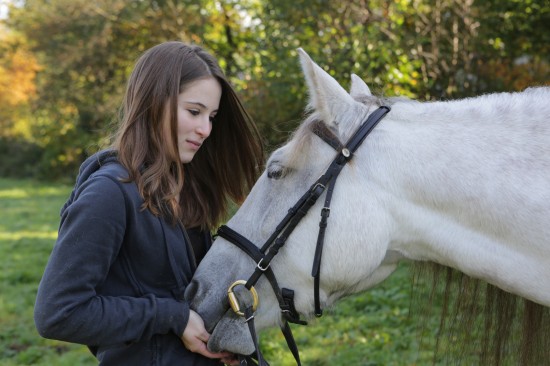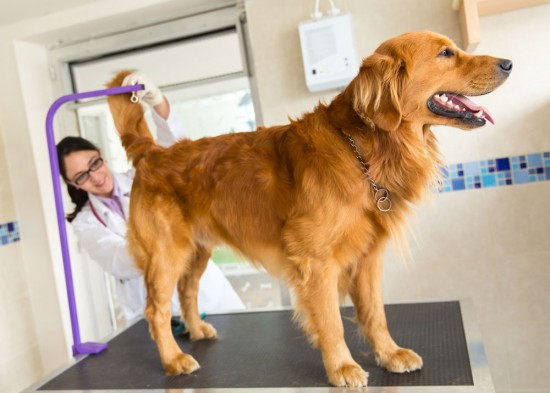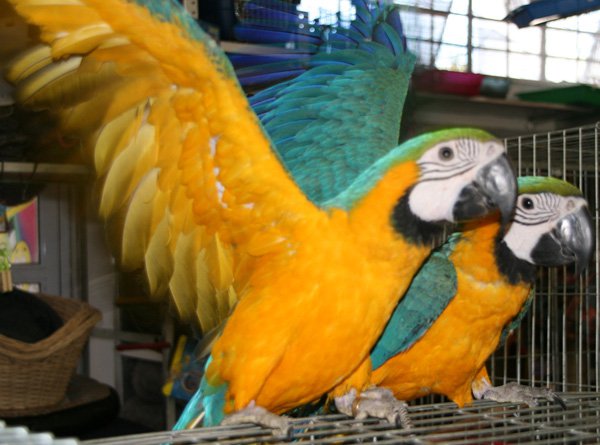
An ounce of prevention is worth a pound of cure! The best way to prevent disease is to keep your dog healthy and in the best shape you possibly can. Feed him good quality food, give him plenty of exercise, and keep his living quarters as clean as possible. If you take care of these basic needs, your dog will be much better equipped to fight off diseases that come along.
Inevitably, even the healthiest of dogs will become sick at some point and the key to getting them well again is being able to identify the signs of illness and take proper action. In this section, we will be focusing on specific areas of the dog, how those areas should appear and function normally, and what signs to look for that point to potential health problems.
Keep in mind that this is a general overview of dog care, and is by no means a comprehensive text. If you have any questions about symptoms your dog is exhibiting, don’t delay in contacting your veterinarian.
The Coat: The state of your dog’s coat can be a good indicator of overall health. The coat should be bright, with a healthy lustre and shine. It should not be overly dry and should spring back into place when moved. Daily brushing will help keep your dog’s coat healthy and shiny by removing dead hairs and debris, and stimulating oil production in the skin. It also gives you a great chance to bond with your dog and serves as a good time to inspect for fleas and ticks. Several dietary factors will also help keep your dog’s coat looking good. Foods made with lamb and rice formulas as well as dietary supplements promote healthy coat.
Keep your eye out for the following conditions that could indicate that there is a problem: Dry Coat, Dandruff, Excessive Scratching, Patches of Missing Hair, Lesions, Crusted Areas, Scaling, Red Patches or Sores, Growths or Lumps and External Parasites (fleas and ticks).
If you observe any of these conditions on your dog, take him to the vet right away! If you find any parasites, you may want to consider purchasing an over-the-counter flea and tick shampoo or insecticide application from your local pet store. Your vet may have several parasite control options available as well that can be extremely effective at eliminating and preventing infestations.
The Eyes: The eyes should be bright and clear, with no signs of cloudiness. They should be checked regularly for any abnormalities.
Trouble Signs: Inflammation of the Eyelids, Runny Eyes, Pus in or around the eyes, Crustiness on the Eyelids, Abnormal Thickening or Swelling of the Eyelids, Irritation of the Eyes, or Surrounding Area, Abnormal Colouring or Spots in the Cornea, Cloudiness, and Protrusion of the Third Eyelid.
The Ears: You should check your dog’s ears on a regular basis. They should appear clean, healthily pink, and should not emit any odour. Floppy eared dogs are more prone to ear problems, including infection. Any dirt of debris can be gently cleaned with a damp cotton ball. But be careful not to push the cotton too far into the ear canal, as this can seriously injure your dog’s ear!
Trouble Signs: Excessive Scratching or Self-Mutilation, Sores or Scratches, Redness or Irritation, Foul Odour, Growths, Parasites.
http://www.tall-indoor-dog-gates.com Tall indoor dog gates is a site dedicated to dog training and healthcare – give us a visit.
 Adopting A Pedigree Cat
Adopting A Pedigr
Adopting A Pedigree Cat
Adopting A Pedigr
 Aflatoxin Poisoning In Horses Explained
Aflatoxin Poisoni
Aflatoxin Poisoning In Horses Explained
Aflatoxin Poisoni
 Anal Gland Problems In Dogs
Anal Gland Proble
Anal Gland Problems In Dogs
Anal Gland Proble
 Cat Genetics Part Two - Inheritance
Cat Genetics Part
Cat Genetics Part Two - Inheritance
Cat Genetics Part
 Khamioka Ridgebacks Poole, Strong pups, both playful and hard-working
Khamioka Ridgebacks Poole, Strong pups, both playful and h
Khamioka Ridgebacks Poole, Strong pups, both playful and hard-working
Khamioka Ridgebacks Poole, Strong pups, both playful and h
Copyright © 2005-2016 Pet Information All Rights Reserved
Contact us: www162date@outlook.com